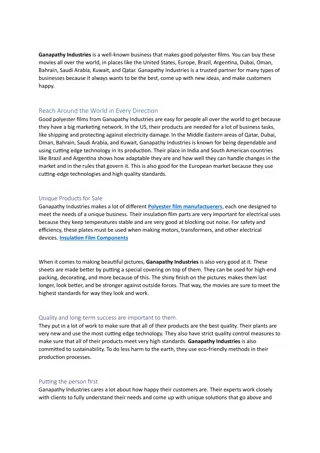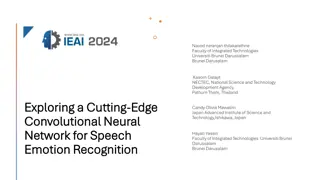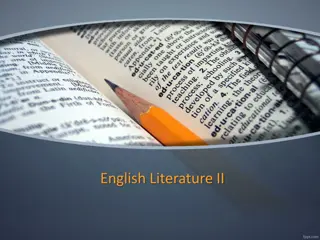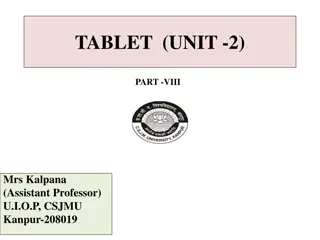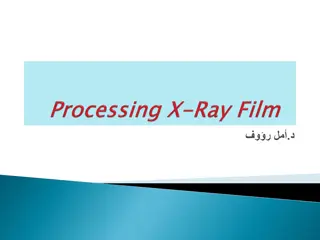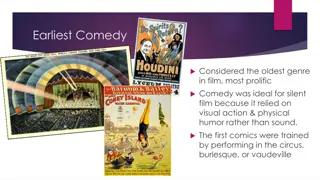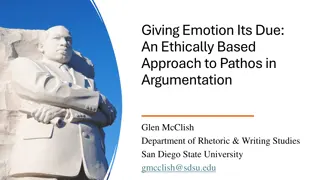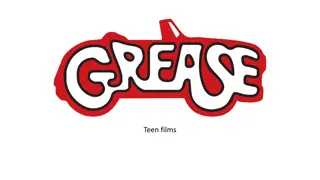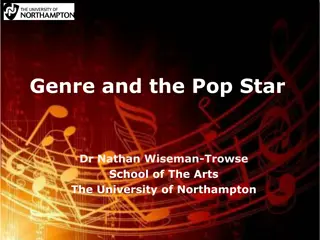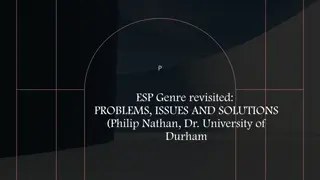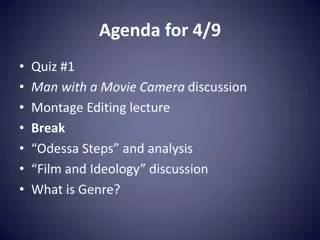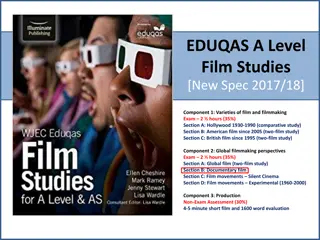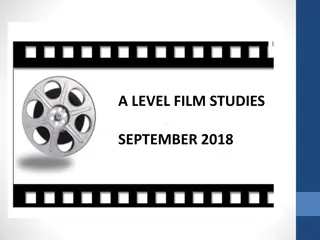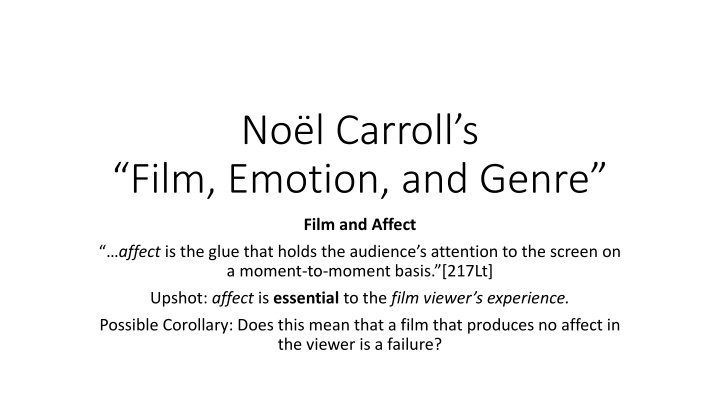
Emotion and Affect in Film: An Analysis by Nol Carroll
Delve into Nol Carroll's exploration of emotion and affect in film, where affect acts as the glue holding audience attention, while differentiating between cognitive and non-cognitive emotions. Discover how emotions drive the film experience and consider the role of emotions in cinematic storytelling.
Download Presentation

Please find below an Image/Link to download the presentation.
The content on the website is provided AS IS for your information and personal use only. It may not be sold, licensed, or shared on other websites without obtaining consent from the author. If you encounter any issues during the download, it is possible that the publisher has removed the file from their server.
You are allowed to download the files provided on this website for personal or commercial use, subject to the condition that they are used lawfully. All files are the property of their respective owners.
The content on the website is provided AS IS for your information and personal use only. It may not be sold, licensed, or shared on other websites without obtaining consent from the author.
E N D
Presentation Transcript
Nol Carrolls Film, Emotion, and Genre Film and Affect affect is the glue that holds the audience s attention to the screen on a moment-to-moment basis. [217Lt] Upshot: affect is essential to the film viewer s experience. Possible Corollary: Does this mean that a film that produces no affect in the viewer is a failure?
Film and Affect Film and Affect affect is the glue that holds the audience s attention to the screen on a moment- to-moment basis. [217Lt] But what is Affect ? For Carroll, affect is anything that a) would usually fall under the common usage of the word emotion b) does NOT count as what he prefers to reserve as the meaning of the world emotion c) What emotion NC-style means: cognitive emotions (i.e., affects that include cognitive elements). d) Examples of NC-style emotions: fear, anger, patriotism, horror, admiration, sorrow, indignation, pity, envy, jealousy, reverence, awe, hatred, love, anxiety, shame, embarrassment, humiliation, comic amusement. e) Examples of NC-style cognitively impenetrable affects : instinctual responses [the startle response], kinesthetic turbulence [squirming in your seat], sexual arousal, phobic responses, PTSD responses to onscreen events that constitute triggers, etc.
How do NC-style emotions differ from the startle response, sexual response, phobic responses, etc.? Answer: they are not mediated [much at least] by thought Consider each of the following NC-style emotions and ask yourself: is each of these really mediated by thinking/thoughts (so the emotion requires thinking as part of having/getting to the emotion)? Fear? Anger? Horror? Admiration? Sorrow? Pity? Envy?
Film and Emotion Film and Emotion garden-variety emotions, like anger, fear, hatred, sorrow are central constituents of the film experience as we know it. [218Rt] These core emotions pull us forward through the story. NC thinks it is the darker emotions , like anger, hatred, and revenge [that] provide the cement that hold our attention on the popular movies we consume. True? Emotion is so pervasive in film, we often don t notice it as it develops and forms a big part of the phenomenology of film experience. JP: we should be thinking about to what extent NC s characterization of these garden-variety emotions as underwriting our experience of most films is true. Can we think of counterexamples: films in which our experience is not driven by emotion?
Again: What is an Emotion? Alternatives to NC s view: #1: Emotion = Bodily-Feeling Problem: Excludes cognition from the emotional complex #2: James-Lange Theory: Emotion = perception of a bodily state Problem: Puts cognition in the wrong place (in the consciousness of a bodily state instead of in the set of thoughts, beliefs, interpretations of events/situations that cause the bodily state [as in the case of the spurned lover]) You can t be angry if there is no one who is the object of your anger
NCs point: while phenomenological qualia and bodily states can attend an emotion, emotions are both directed and have an object to which they are directed (this requires thought/propositional attitudes/ beliefs/interpretations of events/situations) To be angry at my lover I must believe/imagine my lover has wronged me, and that belief, imagined state of affairs stands as the cause of my bodily state. This puts paid to the Emotion-as-Bodily-Feeling Theory. The James-Lange Theory says that I witness a friend being hit by a car, my body responds and when I notice the state of my body, I interpret them as sadness. Only then am I SAD. Implausible.
#3: NCs Theory: Emotion = An Affect that is Caused by a Cognition (belief or belief- like state) and thereby has intentionality (= is directed at an object ) and where the cognition plays a role in identifying what emotional state we are in (e.g. the knot in my stomach and the ache in my solar plexus is due to my having been betrayed by my lover, which I cognize under the category of wrongs done to me and see that I am grief-stricken due to the disloyalty of my lover. #3b: addendum: all cognitions associated with emotional response have a criterion of appropriateness (or subsumption under certain essentially defined categories) associated with them. Anger arises in conjunction with a criterion of wrongs done to me Fear arises in conjunction with a criterion of what is harmful/dangerous. Pity arises in conjunction with a criterion of suffering misfortune Envy arises in conjunction with the criterion having what I lack
#3c: emotions must be temporal states that endure over a time period. #3d: emotions gestalt or organize perception (fear focuses our attention on the dangerous/harmful object; love focuses our attention on the loved object) In NC s wonderful phrase: emotions manage our attention #3e: in directing our attention-perception toward the elements of a situation that support the cognition of the object of the emotion (fear) as subsumable under the appropriate category (harmful/dangerous) and lead us to look further for more elements in the situation that are subsumable under that category.
NCs theory of emotion applies to film-generated emotions, but there is an important difference between everyday-life-activated emotions and film- activated emotions: In everyday life, we are confronted with largely unstructured stimuli and it is only when our apprehension of these stimuli form a basis for beliefs or belief-like states that emotions can arise. In film, the stimuli that confront us are already structured by the filmmaker(s). The filmmaker(s) have already organized the scenes and sequences to establish what features are salient among the film stimuli, ones that normally evoke certain categories of stimuli that we already associate with familiar emotional states into which we enter as we would if the stimuli in everyday life conformed to those that are appropriate to a certain category that evokes familiar emotional states. What are the means of these structured stimuli ? They include: camera position and composition, editing, lighting, the use of color, and, of course, acting and the very structure of the script or narrative.
JP: note that this predigested/sorted/directed feature of the set of stimuli designed to provoke certain specific emotions makes watching a film more emotionally intense at least in part because the signs that the stimuli properly fall under the category of dangerous/harmful are unmistakable, emphasized without any contrary stimuli to cause us to pause on the way to the emotion they usually produce. For that reason, we are more likely to experience fear, and often, more intensely than usual (thanks to the focused emphasis of a well-made film on the things that frighten us! [i.e., the special phenomenological glow that the perceptual focus that emotions produce can bring with it]). Upshot: on NC s account of film-provoked emotion, criterially prefocused film text produces the emotive focus of the audience. BUT: NC knows that the successful production of emotive focus in an audience depends on something more than the existence of the criterially prefocused film text. What is that something more? NC suggests that the narrative must invest the viewer with certain concerns about the fictional characters and events . [223Lb/Rt] Upshot: the viewer has to care about the characters (at least some of them).
JP: True? What about films in which one is not gripped by any characters? Can we think of any examples of good films that we enjoy but which have no characters we care about? (NOTE: this amounts to the suggestion that sometimes films do not evoke emotion and nonetheless are gripping for purely aesthetic reasons [incredible images, beautiful music, a state of mind that is more like that achieved in meditation or in appreciation of, e.g., the beauty of nature]) Caveat: NC s account is directed at a subset of possible films: narrative fiction films and so restricted, it may well be that the counterexamples just suggested simply are not narrative fiction films . One final aspect of how audiences respond emotionally to narrative fiction films: if the pro attitude promoted by the criterially prefocused film text is satisfied by how things turn out in the film, the response is euphoria (to some degree), whereas if things turn out in a way that conflicts with the preferences associated with that pro attitude , the response will be dysphoric. JP: NC s theory needs to be modified to take into account preexisting audience preferences and expectations as those often override or interfere with the effectiveness of the criterial prefocused film text. (e.g., my friend who hated Tom Cruise, refused to respond appropriately to Top Gun even though the film is very well-made in the criterial prefocused film text sense!)
Film and Genre Film and Genre NC thinks that because genre films are especially good at emotive address (=the set of background information that the criterially prefocused film text presupposes and the audience must already posses in order to be affected by the film text in the way the filmmaker intends). For that reason, genre films are a good place to look to test his theory. Genre films specialize in certain pre-ordained emotions: Tragedy specializes in arousing fear and pity. Melodrama specializes in arousing sadness (crying) and pity through misfortunes suffered by protagonists, including suffering they deliberately undergo in service of another character thus arousing what NC calls a compound emotion : sadness combined with admiration. This helps to prevent a melodrama from becoming dystopian.
Horror specializes in provoking fear pursuant to threats of harm, but it also arouses disgust because the monsters that threaten the lives of the protagonists are unclean, reviling, loathsome by their very nature often because they lack features they should have (spider is too big, Frankenstein has parts from different bodies and wasn t naturally alive, are insect-like but also humanlike, thus mixing features that normally don t go together, etc.) (the Alien in Alien; the swamp monster; the Thing, etc.). Suspense specializes in especially arresting scenes that provoke/arouse a feeling of suspense, which is a future-oriented emotion where an outcome that lies in the future is endangered.



